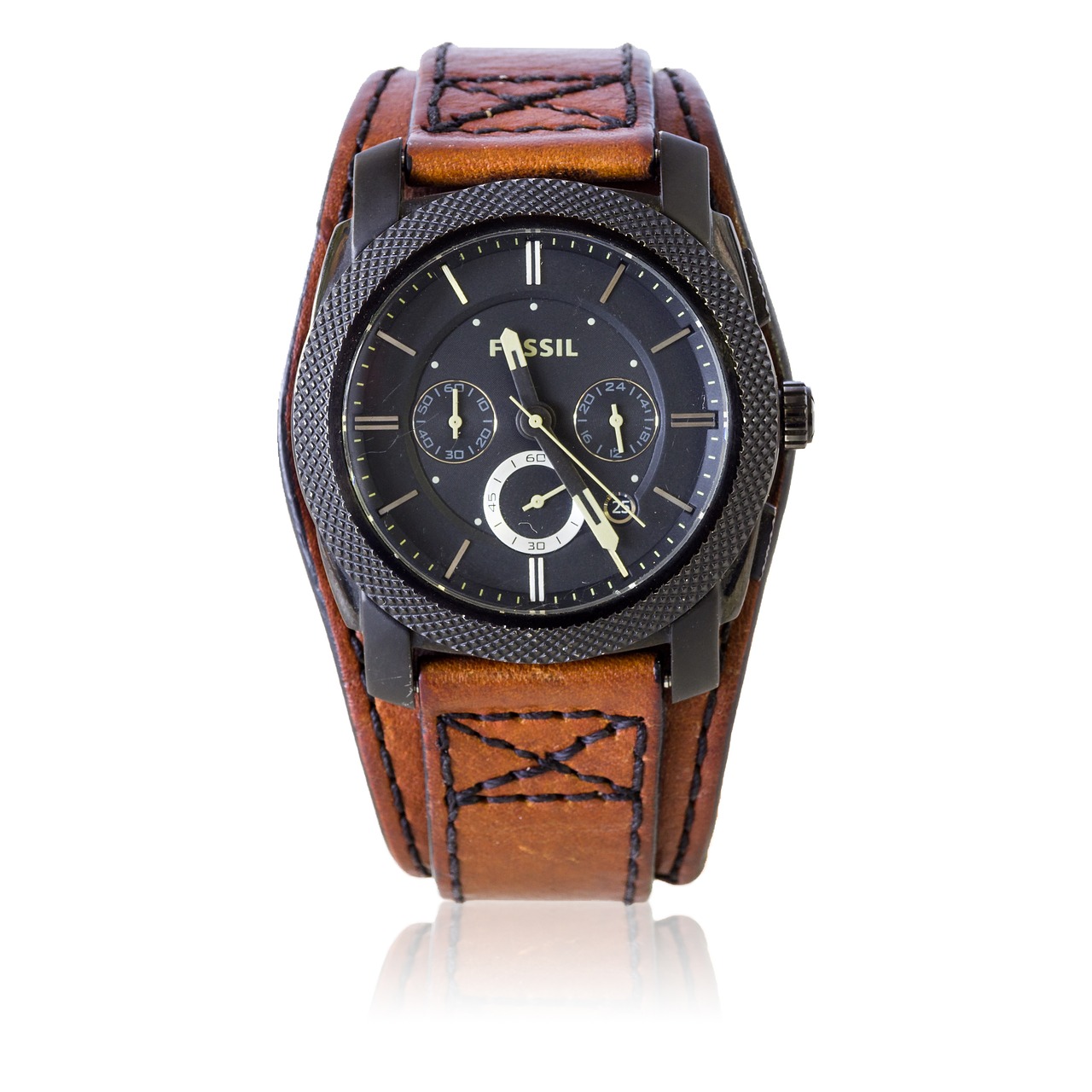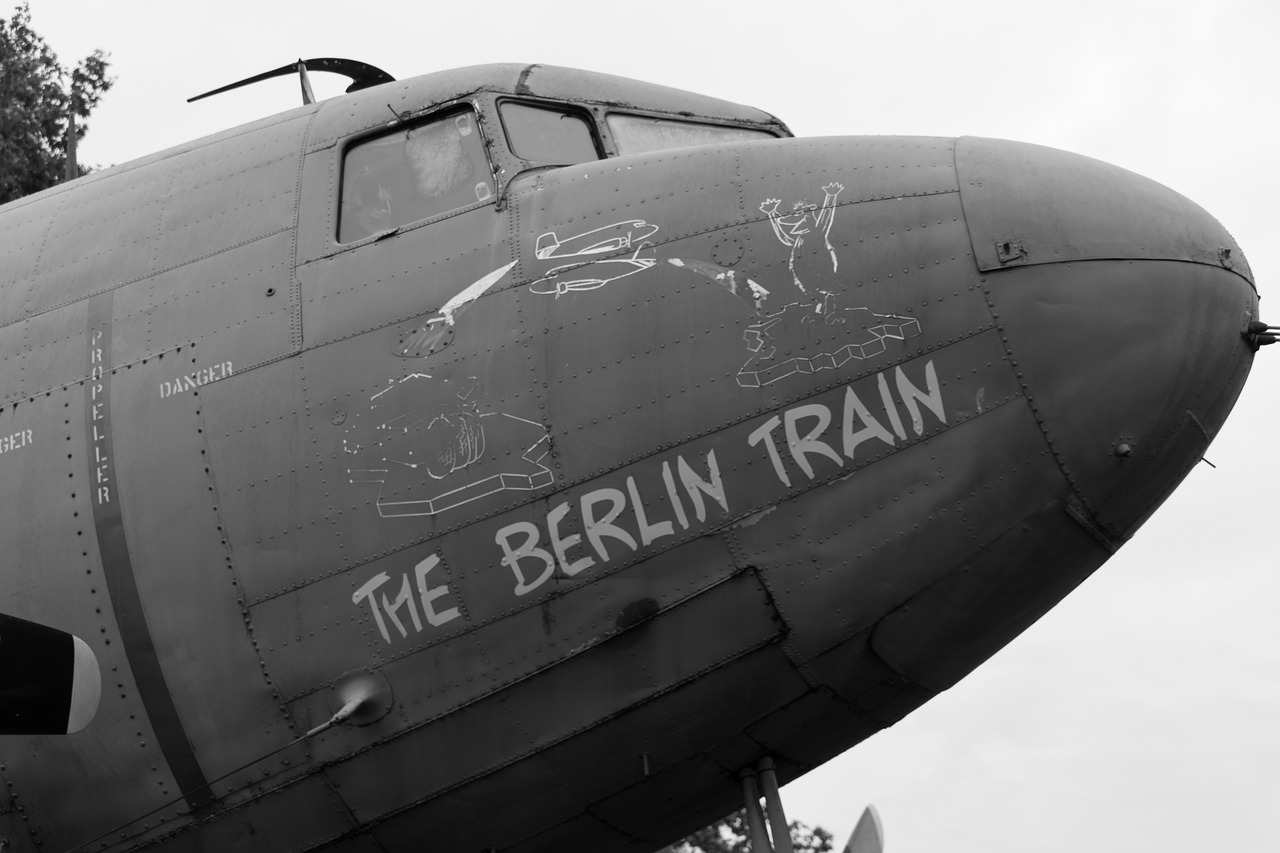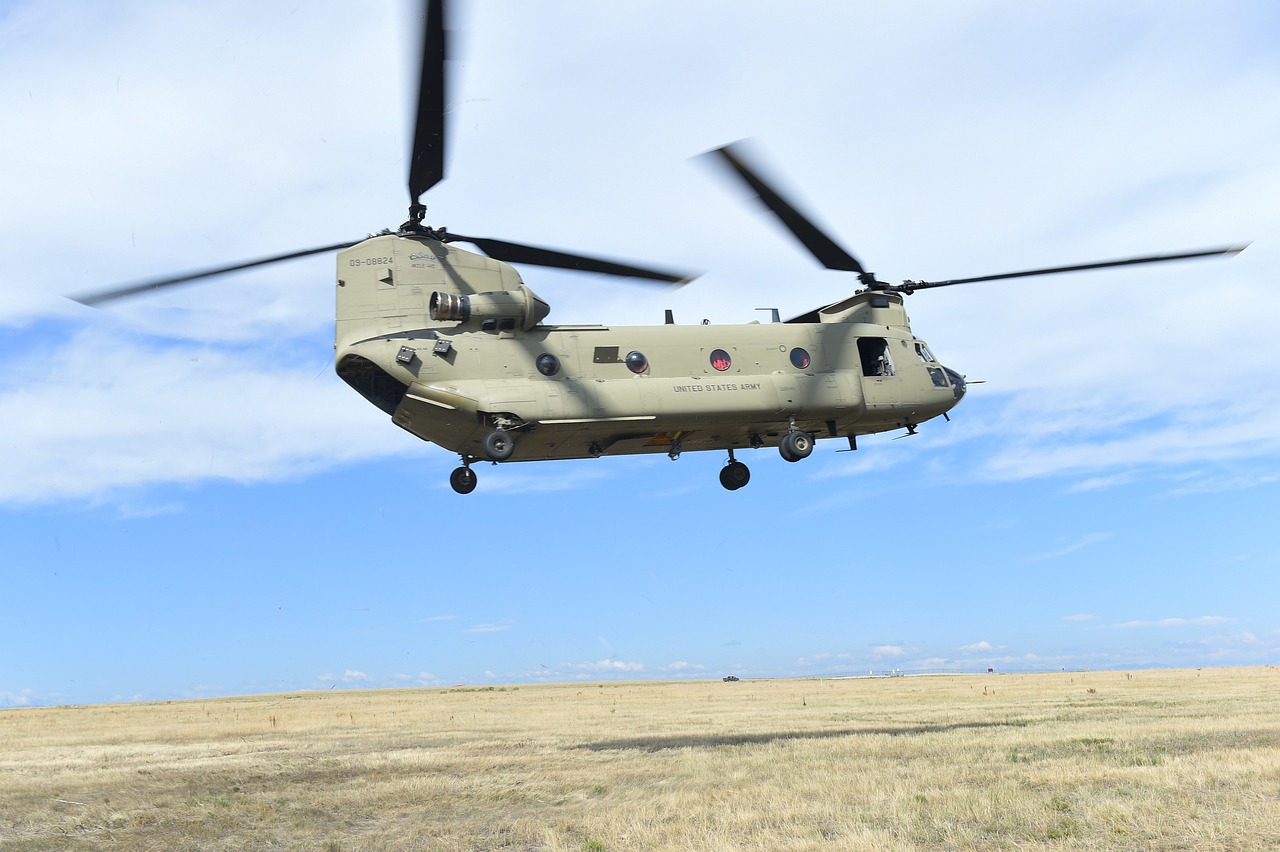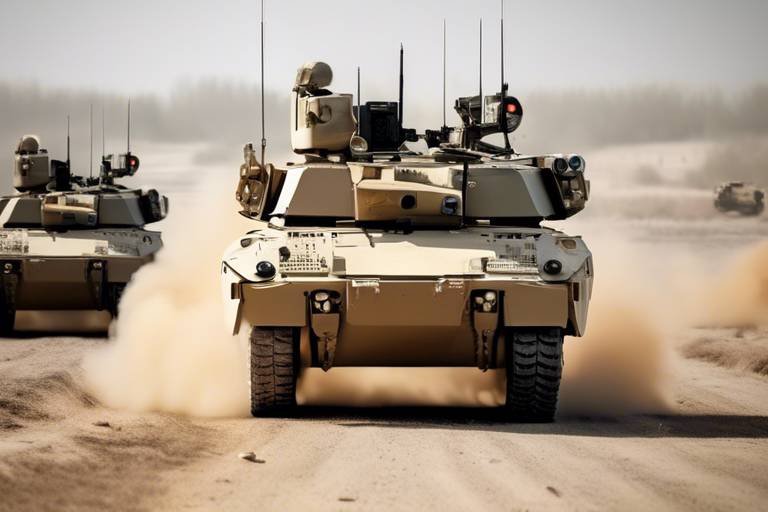Exploring the Capabilities of the CH-47 Chinook Helicopter
The CH-47 Chinook helicopter stands tall as one of the most iconic and versatile aircraft in military aviation history. Designed to meet the demanding needs of the U.S. Army, this helicopter has earned its stripes over decades of service, proving itself in various roles, from combat support to humanitarian missions. But what exactly makes the Chinook so special? Let’s dive into its features and functionalities that make it a formidable asset in both military operations and civilian endeavors.
The story of the CH-47 Chinook began in the early 1960s, a time when the need for a heavy-lift helicopter was becoming increasingly apparent in military circles. Developed by Boeing Vertol, the Chinook was designed to transport troops and cargo rapidly and efficiently. Over the years, it has undergone numerous upgrades and modifications, adapting to the ever-changing landscape of warfare and technology. From its initial deployment during the Vietnam War to its current role in modern military operations, the Chinook has continually evolved, incorporating advanced technologies that enhance its capabilities and performance.
One of the most striking features of the CH-47 Chinook is its unique twin-rotor system. This design not only provides exceptional lift capacity but also enhances stability and maneuverability. The helicopter boasts impressive dimensions, measuring approximately 98 feet in length and 18 feet in height, with a maximum takeoff weight of around 50,000 pounds. Its spacious cabin can accommodate up to 33 troops or transport up to 24,000 pounds of cargo, making it a true workhorse in the sky. The Chinook's ability to operate in various environments, from desert terrains to mountainous regions, further underscores its versatility and reliability.
The CH-47 Chinook serves multiple operational roles that make it indispensable in both military and civilian contexts. Here are some of its primary functions:
- Troop Transport: The Chinook can swiftly transport soldiers to and from combat zones, ensuring rapid deployment and extraction.
- Cargo Lifting: Its heavy-lift capabilities allow it to carry essential supplies, equipment, and vehicles, crucial for sustaining military operations.
- Medical Evacuation: The helicopter is equipped to perform medevac missions, providing critical support in emergency situations.
- Humanitarian Aid: In times of disaster, the Chinook plays a vital role in delivering aid and relief supplies to affected areas.
When it comes to combat effectiveness, the CH-47 Chinook has proven its mettle in various high-stress situations. Its ability to operate at high altitudes and in adverse weather conditions sets it apart from many other helicopters. The Chinook's robust design and powerful engines enable it to carry out missions in challenging environments, whether it’s navigating through mountainous terrain or conducting night operations. Its resilience and adaptability have made it a trusted choice for military forces around the globe.
As technology advances, so too does the CH-47 Chinook. Recent upgrades have introduced cutting-edge avionics, enhanced navigation systems, and advanced defensive measures that ensure mission success and crew safety. These improvements not only enhance operational efficiency but also provide pilots with the tools they need to navigate complex battlefield scenarios. With ongoing investments in technology, the Chinook is poised to remain at the forefront of military aviation for years to come.
The CH-47 Chinook is not just an American icon; it has found a home in the arsenals of various nations around the world. Countries such as Canada, the United Kingdom, and Australia utilize the Chinook for its reliability and effectiveness in diverse operational theaters. From combat zones to disaster relief efforts, the Chinook's global presence reflects its versatility and the trust placed in it by military forces worldwide.
To ensure the CH-47 Chinook remains operationally ready, a comprehensive maintenance and support program is essential. Regular inspections, parts replacement, and system upgrades are crucial for keeping this helicopter flying high. The logistics involved in maintaining such a sophisticated aircraft highlight the importance of support systems in military aviation. A well-maintained Chinook is not just a flying machine; it’s a lifeline for troops and civilians alike.
Looking ahead, the future of the CH-47 Chinook is bright. Ongoing developments focus on integrating cutting-edge technologies that will further enhance its performance and capabilities. As military operations evolve, so too will the Chinook, adapting to meet the needs of modern warfare and humanitarian missions. With a commitment to innovation, the Chinook is set to remain a key player in military aviation for decades to come.
- What is the maximum load capacity of the CH-47 Chinook? The Chinook can lift up to 24,000 pounds of cargo.
- How many troops can the Chinook transport at once? It can transport up to 33 troops.
- What are the primary roles of the CH-47 Chinook? Its primary roles include troop transport, cargo lifting, medical evacuation, and humanitarian aid.
- Which countries use the CH-47 Chinook? Several countries, including the U.S., Canada, the UK, and Australia, utilize the Chinook.

History of the CH-47 Chinook
The CH-47 Chinook helicopter has a fascinating history that traces back to the early 1960s, a time when the United States was deeply involved in military conflicts and sought to enhance its aerial capabilities. Designed by the Boeing Vertol Company, the Chinook was born out of the necessity for a heavy-lift helicopter that could transport troops and supplies efficiently in various environments. Its first flight occurred in 1961, and by 1962, it was officially introduced into the U.S. Army's inventory. The Chinook quickly established itself as a vital asset during the Vietnam War, where its ability to carry heavy payloads and operate in adverse conditions proved invaluable.
One of the key features that set the Chinook apart from its contemporaries is its unique twin-rotor system. This design not only provides exceptional lift capabilities but also enhances stability and maneuverability, allowing the helicopter to perform in tight spaces and challenging terrains. As the years progressed, the Chinook underwent several upgrades and modifications, adapting to the changing needs of military operations. For instance, the introduction of the CH-47D variant in the 1980s brought improved avionics, more powerful engines, and enhanced cargo handling systems, further solidifying its reputation as a workhorse in the skies.
Throughout its service, the Chinook has been involved in numerous significant military operations, including the Gulf War, Operation Enduring Freedom, and Operation Iraqi Freedom. Its ability to transport troops and equipment swiftly made it a critical component of military logistics. Moreover, the Chinook has also played a pivotal role in humanitarian missions, delivering aid and supplies to disaster-stricken areas around the globe. From the earthquake in Haiti to the tsunami relief efforts in Indonesia, the Chinook has proven its versatility and reliability beyond combat scenarios.
As we look back at the history of the CH-47 Chinook, it's essential to recognize the contributions of the engineers and military personnel who have dedicated their efforts to improving this remarkable aircraft. The Chinook's legacy continues to evolve, with ongoing upgrades and modifications that ensure it remains at the forefront of modern aviation technology. Today, it stands as a testament to innovation and resilience, embodying the spirit of adaptability that is crucial in both military and civilian aviation.
- What is the primary purpose of the CH-47 Chinook?
The CH-47 Chinook is primarily used for heavy-lift transport of troops, equipment, and supplies in military operations and humanitarian missions. - How many variants of the CH-47 Chinook exist?
There are several variants of the CH-47 Chinook, including the CH-47A, CH-47D, and CH-47F, each with specific improvements and capabilities. - What makes the Chinook unique compared to other helicopters?
The Chinook's twin-rotor system allows for greater lift capacity, stability, and maneuverability, making it suitable for a wide range of missions.

Design and Specifications
The CH-47 Chinook helicopter is a marvel of engineering that stands out in the realm of aviation. With its distinctive twin-rotor system, this heavy-lift helicopter boasts a design that not only looks impressive but also enhances its performance significantly. Measuring approximately 98 feet in length and with a height of 18.3 feet, the Chinook is designed to carry substantial loads while maintaining stability and agility in flight. Its rotor diameter spans 60 feet, providing the necessary lift and thrust to operate efficiently in various environments.
One of the most striking features of the Chinook is its ability to transport heavy cargo. With a maximum payload capacity of around 26,000 pounds, it can carry a variety of equipment, supplies, and personnel. This capability makes it an invaluable asset for both military and humanitarian missions. The helicopter's internal cargo area can be configured for different roles, whether it's transporting troops or carrying essential supplies during disaster relief operations.
In terms of specifications, the Chinook is powered by two Honeywell T55-GA-714A engines, which provide it with the necessary power to perform in high-demand situations. These engines enable the Chinook to reach a maximum speed of 170 knots (about 196 mph) and operate at altitudes up to 20,000 feet. The helicopter's range is impressive as well, with the ability to fly approximately 400 nautical miles without refueling, making it suitable for long missions.
The design elements of the Chinook are not just about aesthetics; they play a crucial role in its functionality. The helicopter's unique tandem rotor configuration allows for improved lift and maneuverability, reducing the risk of retreating blade stall—a common issue in single-rotor helicopters. This design also contributes to the Chinook's ability to carry heavy loads while maintaining stability in turbulent conditions.
Additionally, the Chinook's fuselage is constructed from lightweight yet durable materials, enhancing its overall performance and fuel efficiency. The cockpit is equipped with advanced avionics, providing pilots with essential information for navigation and mission planning. The helicopter's design also includes features that enhance crew safety, such as crashworthy seats and ballistic protection.
| Specification | Details |
|---|---|
| Length | 98 feet |
| Height | 18.3 feet |
| Rotor Diameter | 60 feet |
| Maximum Payload Capacity | 26,000 pounds |
| Engines | 2 Honeywell T55-GA-714A |
| Maximum Speed | 170 knots (196 mph) |
| Operating Altitude | Up to 20,000 feet |
| Range | 400 nautical miles |
In summary, the design and specifications of the CH-47 Chinook helicopter make it a formidable asset in both military and humanitarian contexts. Its ability to adapt to various roles, coupled with its impressive performance metrics, showcases why it remains a preferred choice for many nations around the world.
- What is the primary use of the CH-47 Chinook? The Chinook is primarily used for troop transport, cargo lifting, and medical evacuation.
- How many crew members operate the CH-47 Chinook? Typically, the Chinook is operated by a crew of three, including a pilot, co-pilot, and flight engineer.
- Can the CH-47 Chinook operate in adverse weather conditions? Yes, the Chinook is designed to operate in a variety of weather conditions, including rain, snow, and fog.
- What advancements have been made in the Chinook's design? Recent advancements include improved avionics, enhanced defensive systems, and increased cargo capacity.

Operational Roles
The CH-47 Chinook helicopter is often hailed as a workhorse in both military and civilian operations, showcasing its remarkable versatility. This twin-rotor beast is not just a pretty face in the skies; it has a myriad of operational roles that make it indispensable in various scenarios. From troop transport to humanitarian missions, the Chinook has proven its mettle time and again.
One of the primary roles of the CH-47 Chinook is troop transport. With the ability to carry up to 55 troops, it can swiftly move soldiers to the front lines, ensuring they reach their destination quickly and safely. Imagine a bustling highway in the sky, where soldiers are transported in a matter of minutes rather than hours. This capability is crucial during military operations, where time is of the essence, and every second counts.
But the Chinook doesn't stop at just moving troops. It excels in cargo lifting as well. Equipped with a powerful cargo hook, it can transport heavy loads of up to 26,000 pounds. This makes it an ideal choice for delivering supplies, equipment, and even vehicles to remote locations that are otherwise inaccessible. Picture a massive crane in the air, effortlessly lifting and placing heavy cargo where it's needed most. This capability is vital for sustaining military operations and supporting humanitarian efforts.
Moreover, the CH-47 Chinook plays a significant role in medical evacuation. In times of crisis, every minute can mean the difference between life and death. The Chinook can be configured to transport injured personnel quickly to medical facilities, providing a lifeline in critical situations. Its spacious interior allows for multiple stretchers and medical staff, ensuring that those in need receive prompt care. This role highlights the helicopter's adaptability and importance in saving lives.
Additionally, the Chinook is often employed in disaster relief operations. When natural disasters strike, the need for rapid response is paramount. The Chinook can deliver aid, food, and medical supplies to affected areas, often reaching places that are cut off from traditional transportation routes. Imagine a giant bird swooping down to deliver hope and assistance to those in dire need. This capability not only showcases the Chinook's versatility but also its commitment to humanitarian efforts.
In summary, the CH-47 Chinook helicopter is a multi-talented asset in the skies. Its operational roles extend far beyond simple transportation, encompassing troop movement, cargo lifting, medical evacuation, and disaster relief. Each of these roles is vital in ensuring mission success, whether in military operations or humanitarian missions. As we look to the future, the Chinook will undoubtedly continue to adapt and excel in its operational capabilities, solidifying its place as a true icon in aviation.
- What is the maximum payload capacity of the CH-47 Chinook?
The CH-47 Chinook can carry a maximum payload of approximately 26,000 pounds. - How many troops can the Chinook transport?
The helicopter can transport up to 55 troops, depending on configuration. - Is the Chinook used in humanitarian missions?
Yes, the Chinook is frequently used in disaster relief efforts, transporting supplies and aid to affected areas. - What makes the Chinook different from other helicopters?
The Chinook's twin-rotor system provides enhanced stability and lifting capabilities, making it unique among helicopters.

Performance in Combat
The CH-47 Chinook helicopter has established itself as a formidable force in combat operations, primarily due to its versatility and robust design. Imagine a giant bird, soaring through the skies, carrying heavy loads while dodging enemy fire. This helicopter is not just a mode of transport; it's a lifeline in the heat of battle. Its ability to operate in various combat scenarios, from troop transport to heavy cargo lifting, makes it an invaluable asset on the battlefield.
One of the key features that enhances the Chinook's performance in combat is its twin-rotor system. This unique design not only allows for greater lift capacity but also provides exceptional stability and maneuverability. In high-stress environments where every second counts, the Chinook can swiftly navigate through hostile territories, delivering troops and supplies where they are needed most. The helicopter's ability to hover in place while carrying heavy loads is akin to a superhero holding up a building, showcasing its incredible strength and reliability.
Furthermore, the Chinook's operational range is impressive. With a maximum speed of around 170 knots and a range of approximately 400 nautical miles, it can quickly reach its destination, whether that be a combat zone or a humanitarian mission. This speed and agility are crucial when time is of the essence, especially during medical evacuations where every moment can mean the difference between life and death.
In terms of armament, the Chinook can be equipped with various defensive measures, including machine guns and missile defense systems, enhancing its survivability in combat. The helicopter's ability to operate in adverse weather conditions further amplifies its effectiveness, allowing it to continue missions even when visibility is low or during inclement weather. This resilience is a testament to the engineering excellence behind the Chinook, making it a true workhorse of military aviation.
To illustrate its combat performance, let's consider a few notable operations:
| Operation | Year | Role | Outcome |
|---|---|---|---|
| Operation Desert Storm | 1991 | Troop Transport | Successful |
| Operation Iraqi Freedom | 2003 | Logistics Support | Successful |
| Operation Enduring Freedom | 2001-2014 | Medical Evacuation | Successful |
These operations highlight the Chinook's critical role in ensuring mission success. Its ability to adapt to various scenarios, coupled with its advanced technology, allows it to perform effectively even under pressure. In the chaos of battle, where uncertainty reigns, the CH-47 Chinook stands as a beacon of reliability and strength.
In conclusion, the CH-47 Chinook's performance in combat is not just about its specifications; it's about the lives it saves and the missions it accomplishes. Whether it’s delivering troops to the front lines or evacuating the wounded, this helicopter proves time and again that it is a vital component of modern military operations.
- What is the maximum load capacity of the CH-47 Chinook? The CH-47 Chinook can carry a maximum load of approximately 26,000 pounds.
- How many crew members are required to operate a Chinook? Typically, a crew of three is required, including two pilots and a flight engineer.
- Can the Chinook operate in adverse weather conditions? Yes, the Chinook is designed to operate in a variety of weather conditions, including rain, snow, and fog.
- What types of missions can the Chinook perform? The Chinook can perform troop transport, cargo lifting, medical evacuation, and disaster relief operations, among others.

Technological Advancements
The CH-47 Chinook helicopter is not just a marvel of engineering; it is a testament to the relentless pursuit of innovation in military aviation. Over the years, the Chinook has undergone a series of that have significantly enhanced its operational capabilities and safety features. One of the standout improvements is in the realm of avionics. Modern Chinooks are equipped with advanced flight control systems that allow for greater precision and ease of handling, especially in challenging environments. Imagine piloting a massive helicopter with the same finesse as steering a sports car; that’s the level of control these systems provide!
Furthermore, the integration of navigation systems has revolutionized how the Chinook operates in both military and civilian contexts. With GPS technology and sophisticated terrain mapping, pilots can now navigate complex landscapes with pinpoint accuracy. This is crucial during missions where every second counts, such as evacuating troops from a hot zone or delivering supplies to disaster-stricken areas. The ability to fly at low altitudes while avoiding obstacles is a game-changer, enhancing both mission success rates and crew safety.
In terms of defensive measures, the Chinook has seen notable upgrades as well. The incorporation of countermeasure systems has become essential in today’s combat scenarios. These systems are designed to detect and neutralize incoming threats, such as missiles, ensuring the safety of the aircraft and its crew. Think of it as an invisible shield that protects the helicopter from potential disaster. The combination of these technologies not only enhances the Chinook's survivability but also boosts the confidence of the crew during high-risk operations.
Another fascinating aspect of the Chinook’s technological evolution is its cargo handling systems. The helicopter's ability to lift heavy loads has been augmented by advanced winching and loading systems, making it more efficient in transporting troops and supplies. The integration of automated systems allows for quicker loading and unloading, which is vital during emergency situations. Imagine being able to unload a helicopter in minutes instead of hours—this efficiency can be the difference between life and death in critical missions.
To illustrate the extent of these advancements, let’s take a look at a comparison table showcasing some of the key features of the earlier models versus the latest versions of the CH-47 Chinook:
| Feature | Earlier Models | Latest Models |
|---|---|---|
| Avionics | Basic analog systems | Advanced digital avionics |
| Navigation | Manual navigation | GPS and terrain mapping |
| Defensive Systems | Limited countermeasures | Advanced missile detection and neutralization |
| Cargo Handling | Manual loading | Automated cargo systems |
In conclusion, the technological advancements in the CH-47 Chinook helicopter are not merely upgrades; they are essential enhancements that ensure the aircraft remains a formidable force in both military and humanitarian operations. With each leap in technology, the Chinook solidifies its reputation as a versatile and reliable asset, ready to tackle the challenges of modern warfare and disaster response.
- What is the maximum payload capacity of the CH-47 Chinook?
The CH-47 Chinook can carry a maximum payload of approximately 26,000 pounds (11,793 kg). - How many crew members are required to operate the Chinook?
The Chinook typically requires a crew of three: a pilot, co-pilot, and flight engineer. - What types of missions can the CH-47 Chinook perform?
The Chinook is capable of conducting troop transport, cargo lifting, medical evacuation, and search and rescue missions. - Is the CH-47 Chinook used by other countries?
Yes, the Chinook is used by many countries around the world, reflecting its reliability and versatility.

Global Usage
The CH-47 Chinook helicopter is not just a marvel of engineering; it is a vital asset used by numerous nations around the globe. Its robust design and versatile capabilities have made it a preferred choice for military and humanitarian missions alike. From the rugged terrains of Afghanistan to the disaster-stricken areas of Haiti, the Chinook has proven its worth time and again. But what exactly makes it so popular among various military forces and organizations?
First off, the Chinook's ability to carry heavy loads over long distances is unparalleled. With a maximum payload capacity of around 26,000 pounds, it can transport troops, equipment, and supplies efficiently. This is particularly crucial in military operations where logistics can often be a challenge. The helicopter's twin-rotor design not only enhances its lifting capabilities but also provides exceptional stability, allowing it to operate in adverse weather conditions and challenging environments.
Moreover, the Chinook is used by several countries, reflecting its global footprint. Here are some notable users:
- United States: The primary operator, utilizing the Chinook in various combat and support roles.
- United Kingdom: An essential part of the British Army's air mobility strategy.
- Canada: Employing the Chinook for both military and humanitarian missions.
- Italy: Utilizing the helicopter for troop transport and logistical support.
- Australia: Engaging in operations that require rapid troop movement and heavy lifting.
In addition to military applications, the Chinook has also found its place in humanitarian efforts. Its ability to swiftly deliver aid in the aftermath of natural disasters is invaluable. For instance, during the 2010 earthquake in Haiti, Chinooks were instrumental in transporting relief supplies and evacuating injured individuals, showcasing their versatility beyond combat.
Furthermore, the Chinook's adaptability to various mission profiles is a significant factor in its global usage. Whether it’s troop transport, cargo lifting, or medical evacuation, the helicopter can be configured to meet specific operational needs. This flexibility makes it a reliable choice for many nations, especially those with diverse mission requirements.
As we look to the future, the Chinook's role in global operations is likely to expand even further. With ongoing partnerships and collaborations among nations, we can expect to see more Chinooks deployed in joint missions, enhancing international cooperation in both military and humanitarian spheres.
Q: What countries currently operate the CH-47 Chinook?
A: The CH-47 Chinook is operated by several countries, including the United States, United Kingdom, Canada, Italy, and Australia, among others.
Q: What are the primary uses of the Chinook helicopter?
A: The Chinook is primarily used for troop transport, cargo lifting, medical evacuation, and humanitarian missions.
Q: How much weight can the Chinook carry?
A: The CH-47 Chinook has a maximum payload capacity of around 26,000 pounds.
Q: Why is the Chinook considered versatile?
A: Its ability to adapt to various mission profiles, such as troop transport, cargo delivery, and medical evacuation, makes it a versatile asset in military and civilian operations.

Maintenance and Support
The CH-47 Chinook helicopter, known for its impressive capabilities, also demands a robust maintenance and support framework to ensure it remains operationally ready. Just like a high-performance sports car requires regular check-ups and fine-tuning, the Chinook's complex systems necessitate meticulous attention to detail. The maintenance of this aerial powerhouse is not just about keeping it in the air; it's about ensuring safety, reliability, and efficiency in every mission it undertakes.
One of the key aspects of maintaining the Chinook is its preventive maintenance program. This program is designed to identify potential issues before they escalate into major problems. Scheduled inspections, component replacements, and system checks are all integral parts of this program. Each Chinook is subjected to a daily inspection before flight, which includes checking the engines, rotors, and hydraulic systems. This proactive approach is akin to a pilot checking their instruments before takeoff—it's all about ensuring everything is in perfect working order.
Moreover, the Chinook's maintenance is supported by a comprehensive logistics system that provides the necessary parts and tools for repairs and overhauls. This logistics support is crucial, especially in military operations where helicopters may be deployed in remote areas. Having the right parts on hand can make the difference between a successful mission and a grounded aircraft. The supply chain management for the Chinook is meticulously organized, ensuring that essential components are readily available, whether in a combat zone or during routine maintenance at a base.
To further enhance its operational lifespan, the Chinook employs advanced diagnostic tools that monitor the helicopter's systems in real-time. These tools provide critical data that can predict failures before they occur, allowing maintenance crews to address issues proactively. This technology is similar to how a doctor uses diagnostic equipment to monitor a patient's health—it's all about catching problems early to ensure long-term success.
Training is another vital component of the Chinook's maintenance and support. Maintenance personnel undergo rigorous training programs to familiarize themselves with the helicopter's systems and the latest maintenance techniques. This training ensures that the crew is equipped with the knowledge and skills necessary to perform their duties effectively. Just as a chef must master their culinary skills to create exquisite dishes, maintenance crews must be well-versed in the intricacies of the Chinook to keep it flying smoothly.
Lastly, it's essential to recognize the role of manufacturer support in the Chinook's maintenance ecosystem. The original equipment manufacturer (OEM) provides ongoing support, including technical assistance, training resources, and updates on best practices for maintenance. This collaboration is vital for ensuring that the Chinook remains at the forefront of aviation technology and safety standards.
In summary, the maintenance and support of the CH-47 Chinook helicopter are crucial for its operational effectiveness. From preventive maintenance programs to advanced diagnostic tools, every aspect of its upkeep is designed to ensure that this remarkable aircraft can meet the demands of military and humanitarian missions alike. Just as a well-oiled machine runs smoothly, the Chinook's maintenance system ensures that it remains a reliable asset in the skies.
- How often does the Chinook require maintenance? The Chinook undergoes daily inspections before flights, with more extensive maintenance performed at scheduled intervals based on flight hours and operational use.
- What kind of training do maintenance crews receive? Maintenance crews receive rigorous training programs that cover the helicopter's systems, maintenance techniques, and safety protocols to ensure effective upkeep.
- Is manufacturer support available for Chinook maintenance? Yes, the original equipment manufacturer provides ongoing support, including technical assistance and updates on best practices for maintenance.

Future Developments
The future of the CH-47 Chinook helicopter is not just a matter of maintaining its legacy; it's about pushing boundaries and integrating the latest technologies to enhance its already impressive capabilities. As military needs evolve, so too do the demands placed on this versatile aircraft. The focus is on innovation and adaptability, ensuring that the Chinook remains a crucial asset for both military and humanitarian missions.
One of the most exciting areas of development is in avionics. Modern avionics systems are being designed to improve situational awareness for pilots. Imagine a cockpit where data from multiple sources is seamlessly integrated, providing real-time information about the battlefield environment. This level of intelligence can be a game-changer, allowing crews to make faster, more informed decisions under pressure.
Another significant focus is on enhanced propulsion systems. The introduction of more efficient engines could lead to improved fuel economy and increased range, allowing the Chinook to operate in more remote locations without the constant need for refueling. This would not only enhance its operational capabilities but also reduce the logistical burden on support teams.
Furthermore, advancements in defensive technologies are crucial for the Chinook's future. As threats on the battlefield become more sophisticated, the need for advanced countermeasures is paramount. Future Chinooks are likely to be equipped with state-of-the-art systems that can detect and neutralize threats before they become a danger to the aircraft and its crew.
Moreover, modular design is becoming increasingly popular. This approach allows for rapid upgrades and modifications to the Chinook's capabilities without the need for a complete redesign. For instance, if a new technology emerges that significantly enhances cargo capacity or troop transport efficiency, it can be integrated into the existing framework with minimal downtime.
To illustrate the potential future developments, consider the following table summarizing key areas of focus:
| Development Area | Description |
|---|---|
| Avionics | Integration of advanced systems for improved situational awareness. |
| Propulsion Systems | More efficient engines for better fuel economy and range. |
| Defensive Technologies | Advanced countermeasures to neutralize threats. |
| Modular Design | Rapid upgrades without complete redesigns. |
In conclusion, the future of the CH-47 Chinook is bright and full of possibilities. As technology continues to evolve, so will the capabilities of this iconic helicopter. The integration of cutting-edge advancements will ensure that the Chinook remains a vital tool in the arsenal of military and humanitarian efforts worldwide. The journey of innovation is just beginning, and we can only imagine the heights it will reach.
- What is the CH-47 Chinook primarily used for?
The CH-47 Chinook is primarily used for troop transport, cargo lifting, and medical evacuation in both military and humanitarian missions.
- How does the CH-47 Chinook differ from other helicopters?
Its unique twin-rotor system allows for greater lifting capacity and stability, making it particularly effective in challenging environments.
- What are some recent technological advancements in the Chinook?
Recent advancements include improved avionics, enhanced propulsion systems, and advanced defensive technologies.
- Which countries use the CH-47 Chinook?
Many countries utilize the Chinook, including the United States, Canada, and several NATO allies, reflecting its global reputation for reliability.
Frequently Asked Questions
- What is the primary purpose of the CH-47 Chinook helicopter?
The CH-47 Chinook helicopter is primarily designed for troop transport, cargo lifting, and medical evacuation. Its versatility makes it an essential asset in both military and humanitarian operations.
- How does the design of the CH-47 Chinook enhance its performance?
The unique twin-rotor system of the CH-47 Chinook allows for improved lift capabilities and stability. This design reduces the risk of losing control during challenging maneuvers, making it effective in various operational roles.
- What are the key specifications of the CH-47 Chinook?
The CH-47 Chinook has impressive specifications, including a maximum weight capacity of around 24,000 pounds and a length of approximately 98 feet. Its large size and powerful engines enable it to carry substantial payloads over long distances.
- How has the CH-47 Chinook performed in combat scenarios?
In combat, the CH-47 Chinook has proven to be highly effective, demonstrating resilience and adaptability in high-stress environments. Its ability to operate under fire and deliver troops and supplies has made it a crucial component of military operations.
- What technological advancements have been made in the CH-47 Chinook?
Recent advancements include improved avionics, enhanced navigation systems, and advanced defensive measures. These upgrades ensure mission success while prioritizing crew safety in increasingly complex operational theaters.
- Which countries utilize the CH-47 Chinook?
The CH-47 Chinook is used by several nations worldwide, including the United States, Canada, Italy, and Australia. Its reliability and effectiveness have made it a favored choice for various military and humanitarian missions.
- What are the maintenance requirements for the CH-47 Chinook?
Maintaining the CH-47 Chinook involves regular inspections, parts replacements, and adherence to strict logistics protocols. Ensuring operational readiness requires a dedicated support team and access to necessary resources.
- What does the future hold for the CH-47 Chinook?
The future developments for the CH-47 Chinook focus on integrating cutting-edge technologies and enhancements aimed at improving performance and capabilities. This includes ongoing research into more efficient systems and increased payload capacities.



















